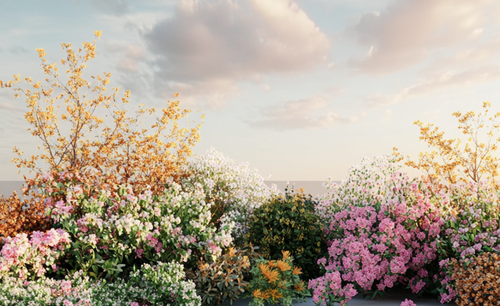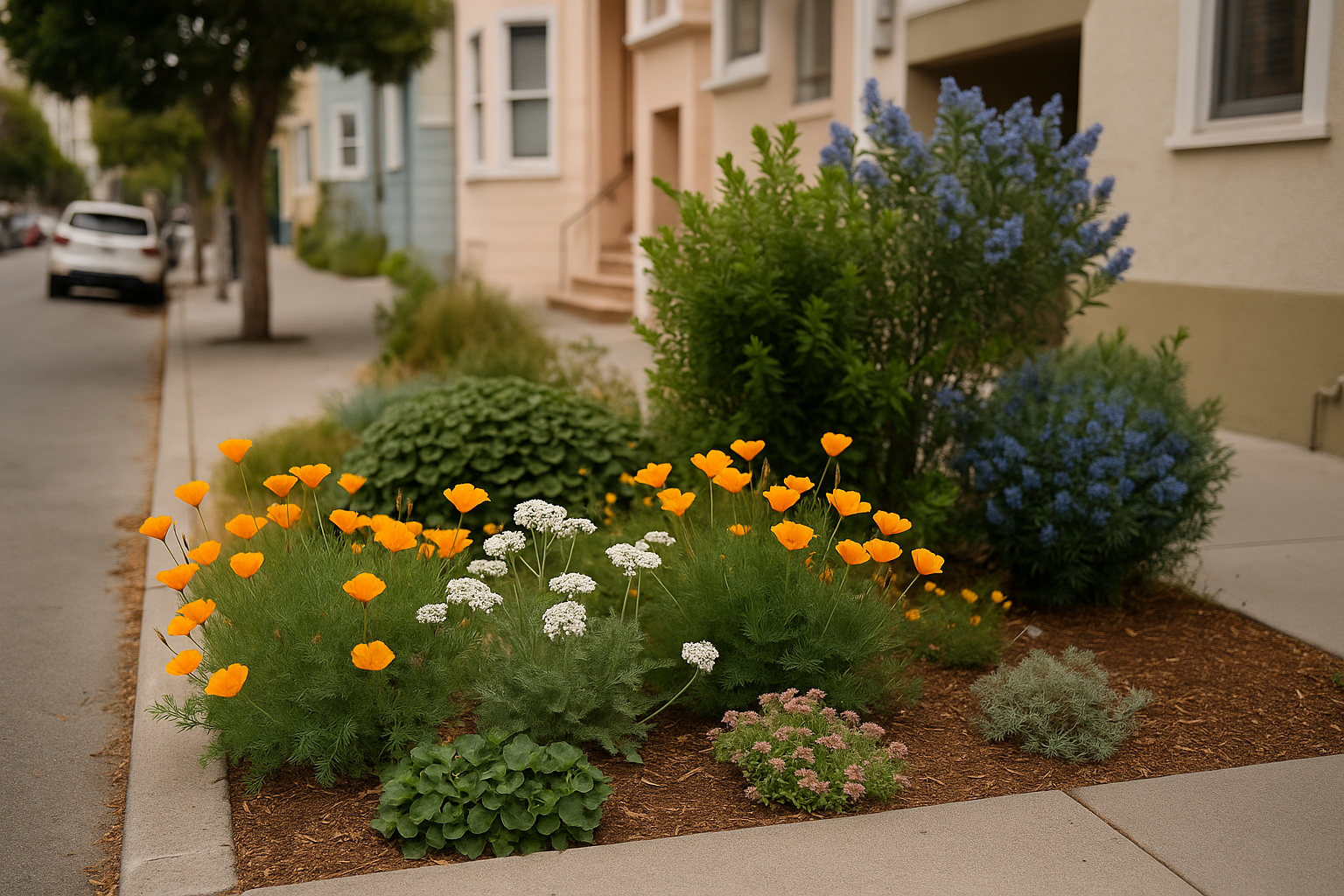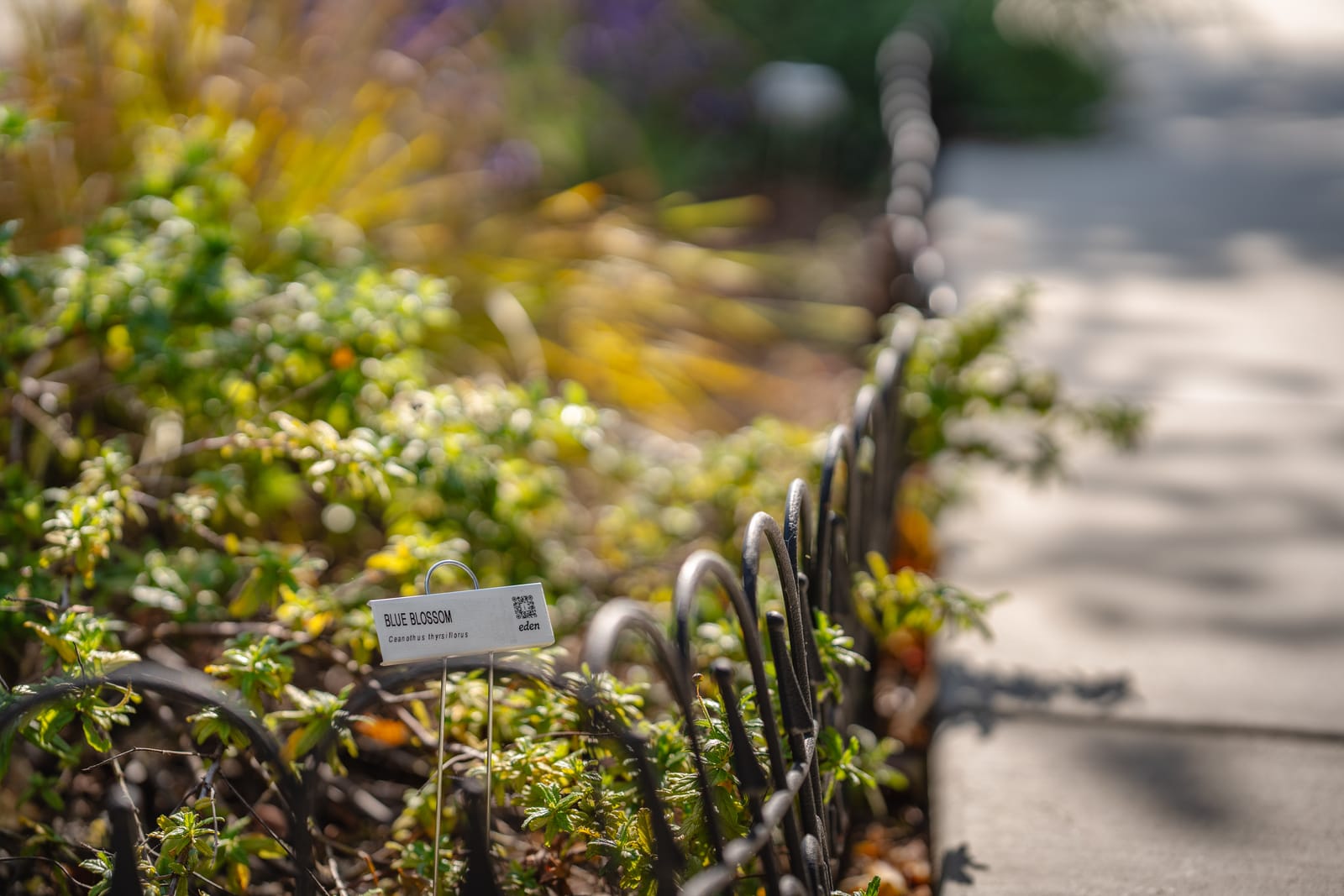Once seen as “wild” or “unruly,” native plants are now at the heart of a fast-growing movement in sustainable landscaping. From sidewalk gardens to public parks, SF residents and designers alike are choosing flora that’s adapted to our unique climate, soil, and urban conditions.
But what exactly makes a plant “native”? And how do you know which ones belong in your garden — and which don’t?
Let’s dig in.
Why Native Plants Are Having a Moment
Interest in native plants is booming — and not just among hobbyists. A 2024 survey found nearly 79% of gardeners nationwide had native plants in their gardens, and native species now top demand lists among landscape architects.
Here in San Francisco, it’s more than a trend — it’s ecological strategy. With dry summers, coastal fog, and microclimates that shift block by block, native plants offer a smart, sustainable way to garden in sync with nature.
At Eden, we help residents plant smarter by matching sidewalk gardens to their local microclimate zones — and that almost always starts with California natives.
What Makes a Plant “Native”?
A native plant is one that evolved naturally in a region before modern development — particularly prior to European colonization. But definitions can be hyper-local.
- California native means it evolved somewhere within the state.
- Bay Area native narrows the field to the nine-county region.
- San Francisco native refers specifically to species that grew on the peninsula before urbanization — the gold standard for ecological fidelity.
True SF natives are adapted to the city’s original landscapes: coastal scrub, serpentine hills, windswept dunes. A great example is Yerba Buena (Clinopodium douglasii) — the namesake of early San Francisco and a minty groundcover still found in local wild patches.
Native Plants That Thrive in San Francisco
Here are some native species that do more than survive — they thrive in SF’s gardens:
Flowers
- California poppy (Eschscholzia californica)
- Clarkia
- Tidy tips (Layia platyglossa)
Grasses
- California fescue (Festuca californica)
- Purple needlegrass (Stipa pulchra) — California's state grass
Groundcovers
- Yarrow (Achillea millefolium)
- Coast strawberry (Fragaria chiloensis) — also a dune stabilizer
Shrubs
- Coyote brush (Baccharis pilularis)
- California lilac (Ceanothus)
- Manzanita – look for local species like Franciscan manzanita, once thought extinct until rediscovered in 2009.
Pollinator Heroes
- Narrowleaf milkweed (Asclepias fascicularis)
- Buckwheat (Eriogonum spp.)
- Cleveland sage (Salvia clevelandii)
Pro tip: Want to know if a plant is truly local? Use SF Plant Finder to filter by "San Francisco native."
Plants That Seem Native… But Aren’t
They’re popular and drought-tolerant, but these plants are imports:
- Lavender – Mediterranean
- Ice plant – South Africa
- Agave – Mexico
- Bougainvillea – Brazil
- Rosemary – Mediterranean
Also, iconic trees like eucalyptus, redwoods, and even palms? Not native to SF. They were introduced in the 1800s and, while beautiful, don’t support local ecology the way true natives do.
Are There Downsides to Native Plants?
Some critiques include:
- “They look messy.” (Tip: smart design mitigates this)
- “They’re hard to find.” (Not anymore — native nurseries are on the rise)
- “They attract bugs.” (Yes — the kind birds and butterflies need)
- “They go brown in summer.” (That’s summer dormancy — it’s natural and saves water)
A native garden asks us to embrace a wilder aesthetic. But with the right species and layout, it can be tidy, lush, and full of seasonal interestNative Plants in Urban ….
The Deeper Benefits of Native Plants in SF
✔ Less Water: SF’s natives are adapted to summer droughts — many thrive with no irrigation once established.
✔ Low Maintenance: They rarely need fertilizers or pesticides, and require less pruning than conventional landscapes.
✔ Supports Pollinators: Native oaks can host hundreds of butterfly species; local wildflowers fuel bees and birdsNative Plants in Urban ….
✔ Resilience: Native plants evolved in SF’s fog, wind, and sandy soils — they’re tough and built for this place.
✔ Cultural Heritage: Plants like California buckeye and Coast live oak link us to the Ohlone landscape and pre-urban ecologyNative Plants in Urban ….
✔ Cost-Saving: Long-term maintenance and water bills drop — great for both homeowners and city plannersNative Plants in Urban ….
Want to Learn More?
For deep dives into native gardening and SF’s ecology, check out:
- Bringing Nature Home by Doug Tallamy
- California Native Plants for the Garden by Bornstein, Fross & O’Brien
- Designing California Native Gardens by Keator & Middlebrook
- The California Native Landscape by Rubin & WarrenNative Plants in Urban …
You’ll also find design tips, maintenance calendars, and plant lists at:
Final Thoughts: Native Is More Than a Trend
Native plants aren’t just beautiful — they’re ecological powerhouses.
They restore habitat, conserve water, reduce pollution, and reconnect us to place. In San Francisco, where the natural world once seemed paved over, they’re bringing the wild back into view — one sidewalk garden at a time.
At Eden, we believe planting local is one of the simplest, most powerful steps you can take for a healthier city. So the next time you see a hummingbird sipping from a buckwheat or a poppy swaying in the fog, know: you’re looking at a quiet revolution.
Ready to plant with purpose?
Start your native garden journey → edenstudio.ai







